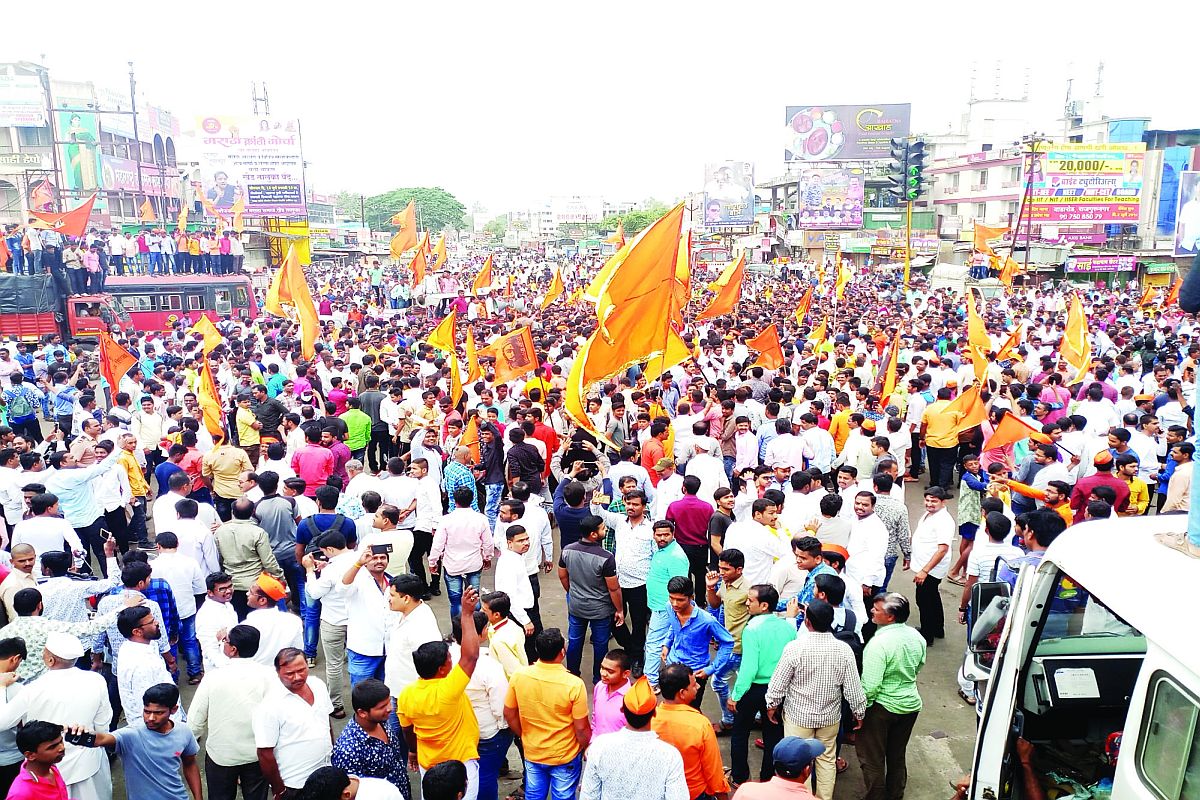SC asks states/UTs to decide on plea seeking to conduct yatras on poll awareness
The bench was told that such orders prohibit all kinds of assemblies, meetings and demonstrations during the duration of elections.
A five-judge Constitution Bench wondered out aloud for how many generations quotas in education and employment would continue while hearing a specific case ~ of reservations for the Maratha community proposed by the state of Maharashtra which breaches the 50 per cent quota limit laid down by the Court in the Indra Sawhney (Mandal) case.

Maratha activists staging a demonstration seeking suitable reservations in government jobs and education
The debate sparked by observations of the Supreme Court on the reservations policy extant in India should be welcomed by all thinking citizens. A five-judge Constitution Bench wondered out aloud for how many generations quotas in education and employment would continue while hearing a specific case ~ of reservations for the Maratha community proposed by the state of Maharashtra which breaches the 50 per cent quota limit laid down by the Court in the Indra Sawhney (Mandal) case.
But the repercussions of this vital question for the health of Indian democracy, premised as it on the individual’s right to equality and not on that of any group, are far-reaching. The query has been posed by the highest court. Now, it would behove the highest policy-making body of the country, Parliament, to debate the issue with a sense of gravitas that rises above petty considerations. The example set in this regard by the Constituent Assembly of India would be worth emulating.
The first lesson to learn from the Constituent Assembly is to define the premise of the debate. In 1949, S. Nagappa (Madras), making the case for reservations for Scheduled Castes, said: “Even today, here and now, I am prepared for the abolition of reservation, provided every Harijan family gets ten acres of wetland, twenty acres of dry land and all the children of Harijans are educated, free of cost, up to the university course and given one-fifth of key posts either in the civilian departments or in the military departments.”
Advertisement
Mohan Lal Gautam (UP) interjected: “Every Brahmin would be willing to swap places with a ‘Harijan’ if they could have such land.” Nagappa argued that a ‘Hindu’ could not just convert into a ‘Harijan’ unless s/he was also prepared to “scavenge and sweep for others.” This exchange is important for two reasons ~ first, the parameters of the debate were limited to those defined as Scheduled Castes; secondly, it was social disadvantage, including its economic and educational consequences, which was to be ameliorated by the implementation of quotas.
As with any policy of state, it is logical for legislators to review at regular intervals the success or lack thereof of the quota policy and to assess whether it is fulfilling its objectives. Is it possible, then, to lay down objective criteria to assess what progress has been made in uplifting those who were provided the benefits of reservation? After all, the concept of a ‘means-test and creamy layer’ was first referred to in the landmark Indra Sawhney judgment itself.
Over time, Other Backward Classes and, now, even more socially dominant groups, have boarded the quota train. Their demands have been dutifully amplified by political organisations with an entrenched statist mindset. It is one thing to say all members of a particular group suffer from a disadvantage; it’s quite another to assert they all suffer from the same disadvantage. It follows that only a nuanced debate which identifies specific measures to ameliorate disadvantages rather than depending exclusively on a one-size-fits-all reservations policy would serve the ends of both social justice and equality.
Advertisement